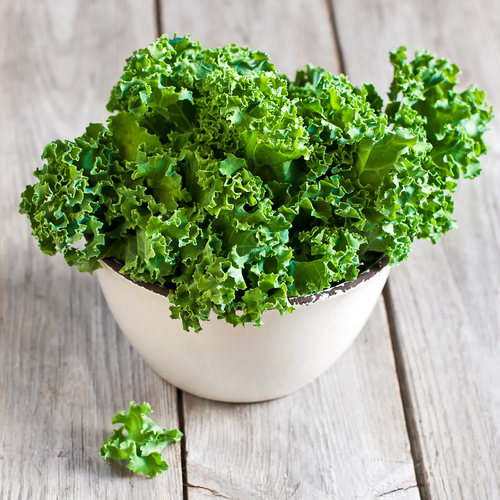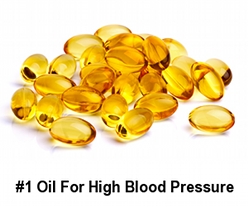For the past five years or so we’ve heard a lot of talk about kale. In fact, it seems as though we are experiencing a kale craze. Restaurants are now offering sides of sautéed kale, juice bars make sure to include it in a variety of smoothies, and there are even artisan kale chips (which are delicious by the way).
But what is the truth about kale? Is it everything it’s cracked up to be?
The answer is a resounding YES and THEN SOME!
When it comes to healthy greens, kale is by far king. It is one of the healthiest and most nutritious plant foods in existence.
Part of the cabbage family, kale is related to other cruciferous vegetables like broccoli, cauliflower, brussels sprouts and collard greens. Though there are many types of kale, some green, some purple, the most common type you’re probably familiar with is curly kale, which has curly leaves and a fibrous stem.
When I said this is one of the most nutritious plants of the planet, I wasn’t kidding. Just one cup of raw kale contains:
- Vitamin A: 206% of the RDA (from beta-carotene).
- Vitamin K: 684% of the RDA.
- Vitamin C: 134% of the RDA.
- Vitamin B6: 9% of the RDA.
- Manganese: 26% of the RDA.
- Calcium: 9% of the RDA.
- Copper: 10% of the RDA.
- Potassium: 9% of the RDA.
- Magnesium: 6% of the RDA.
- Then it contains 3% or more of the RDA for Vitamin B1 (Thiamin), Vitamin B2 (Riboflavin), Vitamin B3 (Niacin), Iron and Phosphorus.
With very little fat (and much of this being of the omega-3 variety) and a decent amount of protein, you start to see why everyone has been talking about kale lately.
If you haven’t been including kale into your diet, here are 5 reasons why you should start TODAY!
1. It’s Loaded with Powerful Antioxidants
Like other fruits and veggies, kale can boast high levels of antioxidants like beta-carotene, vitamin C, and various flavonoids and polyphenols. But unlike other fruits and veggies, a couple of flavonoids and polyphenols found in large amounts in kale are quercetin and kaempferol. These two have been studied intensely and have been found to lower blood pressure, protect the heart, and act as anti-inflammatory and anti-cancer agents.
2. Kale is High in Vitamin C
You know vitamin C is good for your immune system and probably reach for a second glass of orange juice when you feel a cold coming on. But besides supporting a strong immune system, vitamin C is necessary to synthesize collagen, the most abundant structural protein in the body. Not happy with the fine lines forming on your hands and face? Get more vitamin C into your body!
As it turns out, kale contains more vitamin C than most other vegetables. For example, kale contains over 4x the amount of vitamin C than spinach. Sorry Popeye. And, a cup of raw kale contains more vitamin C than a whole orange. That’s something to brag about.
3. Kale is an Excellent Source of Minerals You’re Probably Not Getting Enough Of
Admit it, you’re probably not getting enough of the necessary minerals your body needs to work optimally. As it turns out, kale is an excellent source of calcium, important for bone health and other cellular functions.
Kale also contains a decent amount of magnesium, which is incredibly important as magnesium is what helps all of that calcium get into your bones. If you’re taking a calcium supplement but not getting enough magnesium, chances are that calcium is landing in your joints, causing you pain and stiffness. Magnesium also protects against type 2 diabetes.
Kale also contains a fair amount of potassium, an important mineral that helps maintain electrical gradients in the body’s cells. Potassium deficiency has been linked to high blood pressure and a risk of heart disease. The bottom line is, you’re probably not getting enough of these so you should start eating more kale!
4. Kale Helps Protect Your Eyesight
One of the most common age-related diseases is macular degeneration. It’s bad enough that the hearing starts to go and your bones ache more the older you get. But slowly and steadily losing your eyesight leads to a far less quality of life.
Luckily, adding a couple of important nutrients to your diet can protect your precious eyesight, and kale has both of them.
Kale is high in lutein and zeaxanthin, carotenoid antioxidants that have been found to significantly lower a person’s risk of macular degeneration and cataracts.
5. Kale Protects Your Heart
You most likely know that high levels of cholesterol in your blood can lead to a greater risk of heart disease. But did you know kale can help protect your heart?
Cholesterol is no longer a boogyman. In fact, your body needs cholesterol in order to function properly. For instance, your body uses cholesterol to make something called bile acids, which it then uses to help digest fats. Once the fat from a meal has been absorbed and the bile acids have served their purpose, they get reabsorbed into the blood stream to be used again. Over time, since this cholesterol isn’t going anywhere, your levels can rise.
The good news is there is something called bile acid sequestrants which bind the bile acids in your digestive system and prevent them from being reabsorbed. This process reduces the total amount of cholesterol in your body.
DRUM ROLL…
Kale actually contains a good amount of these bile acid sequestrants, which means if you eat more, along with a sensible diet, you can lower your cholesterol levels and reduce your risk of heart disease.
A study found that eating kale juice for 12 weeks increased HDL (the good cholesterol) by 27% and reduces the LDL (bad stuff) by 10%.
But here’s the real kicker: normally you need to eat vegetables in their raw form in order to benefit from all of the nutrients inside, as heating generally damages nutrients. But in the case of bile acid sequestrants, a study found that steaming them dramatically increases the effect. In fact, steamed kale is actually 43% as potent as a cholesterol lowering drug called cholestyramine, but much healthier.
While we’re on the subject of heart health, it’s important to mention that while high cholesterol is one of the top reasons heart attacks happen, another big reason is stiff arteries. In fact, that’s what ACE inhibitors are meant to do, relax tight blood vessels so blood flows easily to and from the heart.
But, as with any other prescription drug, taking an ACE inhibitor can lead to uncomfortable side effects like headaches, fatigue and dizziness.
Why not relax your arteries and vessels in a more natural and healthy way with Cardio Relax AO, which blends 10 different powerful antioxidants to neutralize the damage of free radicals and support healthy blood circulation.
Combined with our HeartZest, which unblocks your arteries, and a diet rich in kale and other fruits and veggies, you’re setting up your heart for a long and healthy life.
Find out more about Cardio Relax AO and HeartZest – Click Here.
 Validating...
Validating... 






1 Comment